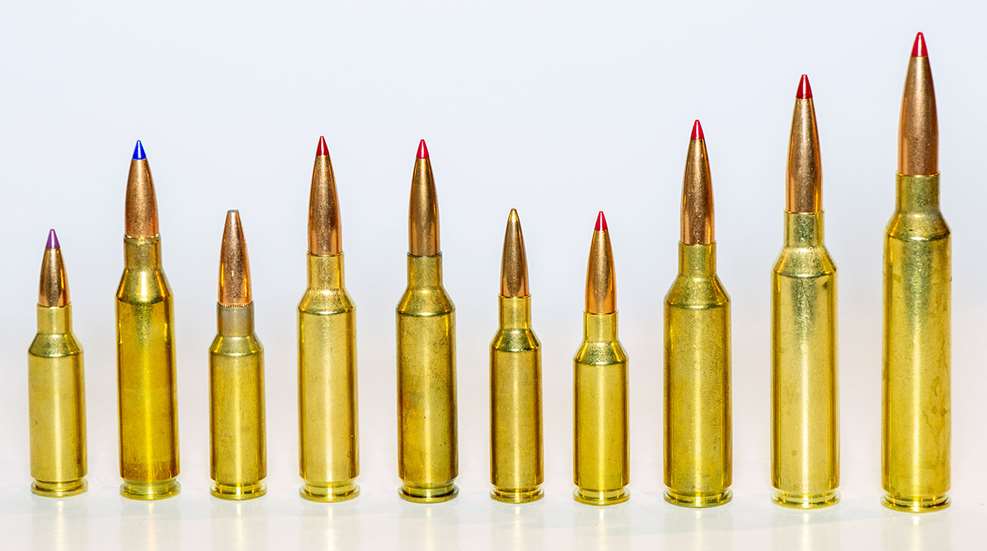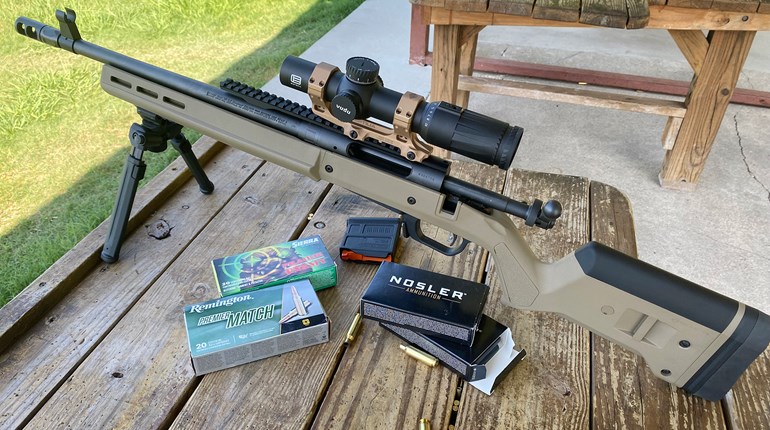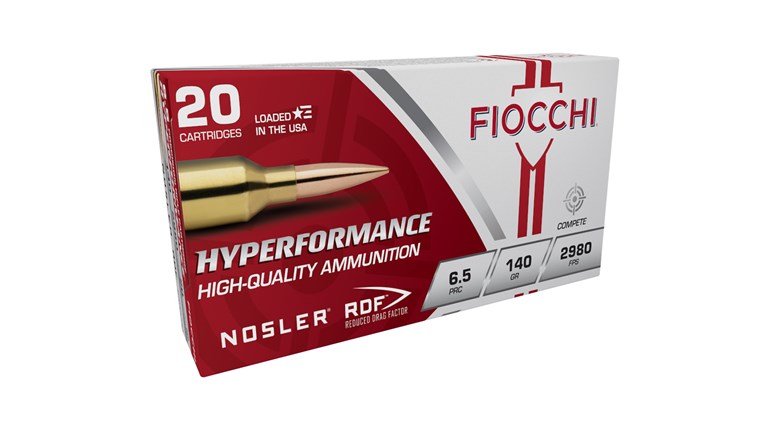
Left to right: 6 mm PPC, .260 Rem., 6.5 Grendel, 6.5 Creedmoor, 6 mm Creedmoor, 224 Valkyrie, 6 mm ARC, 6.5 PRC, 7 mm PRC and 300 PRC.
It could be argued that the 6 mm PPC, which was created in the mid-1970s by Dr. Louis Palmisano and Ferris Pindell, began the evolution of the precision-rifle cartridge. The 6 mm PPC was a .220 Russian cartridge case necked up to 6 mm. The body taper was reduced and it was also given a 30-degree shoulder. It immediately began winning benchrest matches. That was nearly a half-century ago and since then, particularly in the last decade, we’ve seen a lot of advancement regarding the modern precision-rifle cartridge.
Twenty years after the 6 mm PPC, a 6.5 mm wildcat cartridge based on the .308 Win. with its 20-degree shoulder was getting a lot of attention in competition. It became standardized in 1997 as the .260 Rem. and remains popular in that discipline. Ten years later, Hornady gave us gave us what would ultimately become the future. The company necked down the less tapered .30 TC cartridge case, retained its 30-degree shoulder, specified a 1:8-inch twist rate and the 6.5 Creedmoor was born. It was well received by long-range shooters due to its flat trajectory and light recoil.
After finally overcoming its confusing beginnings and its competition with Les Baer’s .264 LBC-AR cartridge, Alexander Arms finally sought SAAMI approval of its cherished wildcat cartridge and the 6.5 Grendel was legitimized in 2010/11. This cartridge is mostly a 6.5 mm, AR-15-compatible version of the 6 mm PPC, with a Creedmoor-like rifling twist rate. It has become moderately popular as a precision-rifle cartridge out to just shy of 1,000 yards.
A fan of .25-caliber rifle cartridges, in 2015 I worked with some other West Virginians necking down the 6.5 Creedmoor to .257-caliber. The result is similar to the .250 Ackley Improved wildcat cartridge that’s been around since the late 1940s, but it does not require fireforming and can be loaded with a 6.5 Creedmoor neck-bushing die. Hornady wasn’t interested, but I was not alone in my thinking. Others have done the same, and Blackjack Bullets offers high BC .257-caliber bullets designed just for it. It also offers reamers and fast-twist barrels, and this wildcat is gaining interest.
Instead, in 2017 Hornady went with the 6 mm Creedmoor, which is the 6.5 Creedmoor necked down to 6 mm. Very similar to the .243 Win., the differences are the same as between the .260 Rem. and 6.5 Creedmoor: shorter cartridge case, 30-degree shoulder, less body taper and faster twist barrels. At about the same time, Hornady also created the 6.5 PRC (Precision Rifle Cartridge) using Ruger’s .300 Compact Magnum as a parent case. The 6.5 PRC has about a 200 fps velocity advantage over the 6.5 Creedmoor.
In 2017, Federal took the precision-rifle cartridge concept in the other caliber direction with its 224 Valkyrie. The company shortened and necked down the 6.8 SPC case to accept a .224-caliber bullet. Federal also gave it a 30-degree shoulder and specified a 1:7-inch twist rate. Like the 6.5 Grendel, it, too, is AR-15 compatible. Two years later, while working with the military, Hornady took us back in time and introduced the 6 mm ARC (Advanced Rifle Cartridge), essentially returning the modern precision-rifle cartridge to where this all started. The 6 mm ARC is very similar to the 6 mm PPC cartridge and was standardized by SAAMI with a faster twist rate. It’s also AR-15 compatible.
But, this was after Hornady took its PRC concept to the extreme in 2018 with the .300 PRC, while working on another military project with the U.S. Special Operations Command. For the .300 PRC, Hornady used the .375 Ruger as a parent case. They retained the 30-degree shoulder and sped up the twist rate. Then—continuing their dominance in this category—Hornady introduced the 7 mm PRC in late 2022. It’s a descendant of the .300 Ruger CM and .375 Ruger cartridge family that’s been necked down to 7 mm. It’ll launch a 180-grain bullet at nearly 3,000 fps, and many are already calling it the ultimate expression of the modern precision-rifle cartridge.
What is a modern precision-rifle cartridge? It could probably best be described as cartridge with: minimal body taper; a 30-degree shoulder; a case, action and throat length compatible with high BC bullets for the caliber and fast-twist rifling. All this helps with trajectory and wind drift because of the more aerodynamic bullets that can be used. Of the two, minimizing wind drift is most important, because while distance can be accurately established, wind speed—from muzzle to target—can only be guessed at.
As for the 30-degree shoulder, some believe it helps with consistent powder burn and can even increase velocity. The steep shoulder does limit case stretching—for handloaders that’s a big deal—and there’s also evidence it helps with precision, mostly through cartridge alignment and chamber fit. The combination of a steep shoulder and less taper in the cartridge body allows for more powder to be inserted into a shorter case, thus allowing the use of high BC bullets without an extreme overall cartridge length.
What does the future hold for the modern precision-rifle cartridge? Hornady probably knows, after all, it has been at the forefront of this movement, though it does seem like most of the bases have been covered. Maybe we’ll see the .25 Creedmoor or maybe some development with the .30 Rem. AR case, which has a lot of potential in the AR-15. However, I think in the short-term, advancements in bullets and propellants are where we’ll see a lot of developmental focus.
I find it ironic that all this precision-rifle cartridge development, which started with the 6 mm PPC, has returned there a half-century later with the 6 mm ARC. But, maybe more ironic is the simple fact we’ve perfected the delivery systems to the point their abilities far exceed that of the shooters. We’re unquestionably equipped to shoot with precision at any practical distance, with all the force we might need. Now, we might want to focus on learning how to do it.






































